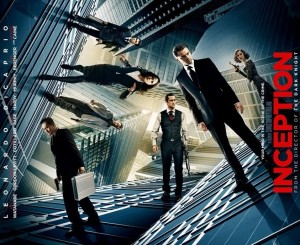We should have known better. But, the profit estimates were staggering and we couldn’t let this opportunity slip through our fingers. There was no end to the thirst for new forms of entertainment, especially by the rich and powerful. Already, with enough money, you could visit the deepest parts of the ocean, be king (or queen) for a day on your own private island with all your “subjects” catering to your every whim — and I mean every — or dive into the heart of a volcano. Hell, with enough money, you could take a rocket to the moon and stay in the Sea of Tranquility Resort, offering what was promised as the best view in the solar system. But, even with all of these possibilities, people wanted more — more entertainment, more thrills, more escapes from their every day lives.
When we had our “eureka” moment, we knew we were on to something big. We would offer people the ultimate escape, time travel. Tours in Time, we called ourselves. Of course, we couldn’t send you physically back in time. Clearly, that violates all sorts of laws of physics. However, we could send your mind back in time, to hitch a ride, so to speak, with someone living in the past.
Mind-spying technology wasn’t new. It was originally developed by the government to do exactly that: spy on our enemies. And our friends too, for that matter. With mind-spying tech, your consciousness essentially left your body and inhabited that of another, any one, without them knowing it. While you were mind-spying, your thoughts were your own, but you could experience everything that your host experienced. You would see what they saw, hear what they heard, feel what they felt. You wouldn’t know what they thought, but you experienced everything else as if it were happening to you.
Very quickly, we learned all of the important secrets of our enemies and trading partners and soon had major advantages over all of them. We leaked scandals about leaders we wanted ousted. We knew the weaknesses of competitors that we exploited in trade negotiations. Soon, we were by far the dominant super-power on the planet, even eclipsing the all-powerful United States of America.
As the technology spread, it invaded other areas of life. Mind-spying technology expanded beyond the realm of government and became a tool for law enforcement and entertainment. The police began directly spy on criminal organizations while they plan their crimes. Fans experienced football games from the perspective of their favorite athletes. The porn industry was revitalized when they adopted mind-spying technology. A man experiencing sex from a woman’s perspective? There were no limits to what could be experienced.
Our team had taken the technology one step further. We had begun experimenting with using mind-spying technology to send minds back in time. Our primary clients were scholars, who used this ability to witness historical events first hand, which often led to completely new interpretations and the rewriting of many history books. Law enforcement soon saw the possibilities and began hiring us to send them back to the scenes of crimes, mind-spying on suspects to determine without a doubt their role in said crime. But, these were limited cases, funded by the government in very special circumstances.
With time, we perfected our capability to send minds back in time, but were still focused on special contracts with universities and the government. We knew there would be a huge market for our technology amongst thrill seekers. Imagine being able to go back in time and experience the World Championship match from the perspective of the MVP Jon Ratcsh or the Battle of Washington from the point of view of General Arthur O’Shea. The possibilities were endless, and so was the profit potential.
We decided that our first “destination” would be the Wild West of the former United States of America. Even to us, the West embodied a romanticism and a spirit of individuality that transcended the US, that somehow captured human nature like no other. Our movies and games continuously featured the West and the characters of that time — Billy the Kid, Butch Cassidy, Jesse James. What better place to send our first tourists than that most infamous of times!
Our first client — our first Westernaut — was a poker fanatic. He was known to drop more than the GDP of some of the smaller former states of the US in just one night. His destination was Wild Bill Hickok, who was killed holding what became known as the Dead Man’s Hand — aces and eights. Yet no one knew what the fifth card that Wild Bill died holding was and our client simply had to know. He viewed it as the ultimate poker mystery.
Of course, Wild Bill died in the middle of the game, but that didn’t concern us. Deaths often occurred while someone was mind-spying. If the host died, your mind immediately returned to your own body. In fact, there were rumors that some the very rich but very twisted participated in a modern form of snuff films this way.
However, some mysteries, it seems, are meant to remain hidden. We sent our Westernaut back one hour before Wild Bill’s death. That should have given him time enough to adjust to his new surroundings and “watch” as Wild Bill was dealt that fateful hand. And, indeed, about an hour later, our client’s body shuddered just like bodies do when their mind-host dies. But, unlike normal mind-spying deaths, our client didn’t immediately open his eyes and gasp for air. Instead, his body functions shut down, his heart stopped and his brain waves ceased. He died along with Wild Bill Hickock.
Needless to say, the family of our client, armed with a contract that guaranteed no harm, immediately sued us for all we had, all of the company’s assets. The judges sided with the family and our company was shut down. That was the end of our brief experiment with Westernauts.
This story was inspired by Rose and her mispronunciation — or my mishearing — of the word “restaurant”.
Like this:
Like Loading...





